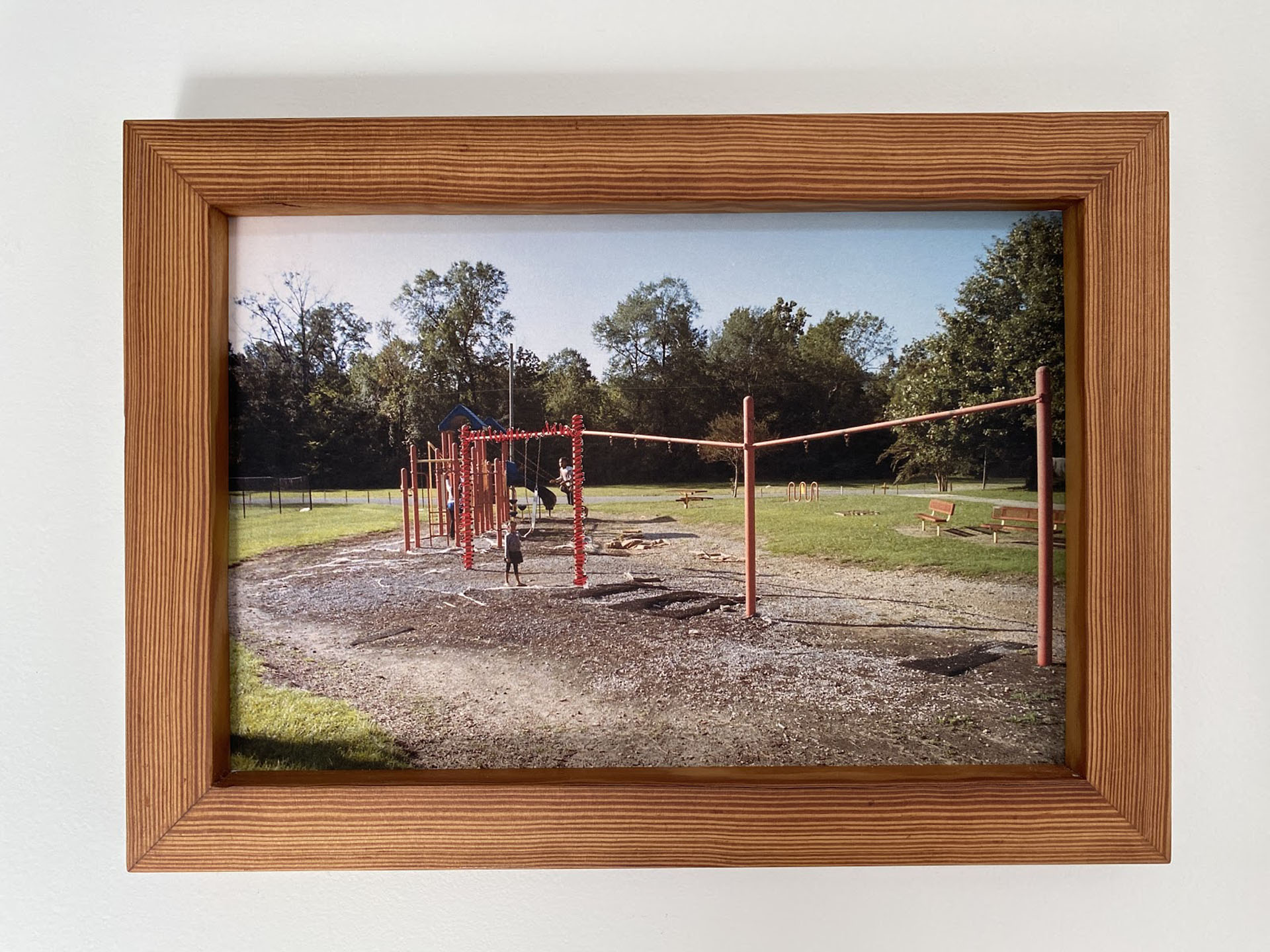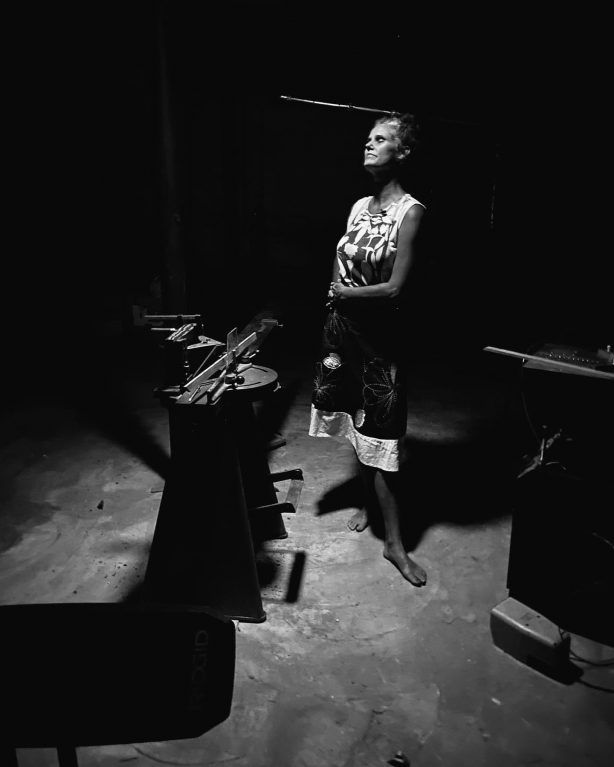
B20 Artist Interview with Tara Stallworth Lee
 B20: Wiregrass Biennial is a juried exhibition that encourages innovative and progressive work and showcases the South’s most talented contemporary artists, illustrating the region’s rich cultural heritage. Selected work utilizes a variety of art forms and media, including paintings, sculptures, mixed media, new media, and installation art. Three jurors chose from a field of over 130 entries for this year’s exhibition — the first virtual exhibition ever for WMA — featuring 39 artists from 11 states.
B20: Wiregrass Biennial is a juried exhibition that encourages innovative and progressive work and showcases the South’s most talented contemporary artists, illustrating the region’s rich cultural heritage. Selected work utilizes a variety of art forms and media, including paintings, sculptures, mixed media, new media, and installation art. Three jurors chose from a field of over 130 entries for this year’s exhibition — the first virtual exhibition ever for WMA — featuring 39 artists from 11 states.
We’ve shared a series of interviews with B20 artists during the run of the exhibition, and our final one is from Birmingham, Alabama-based artist Tara Stallworth Lee.
Where do you find inspiration for your artistic practice?
SHORT ANSWER
Everywhere! Nature. People. Music. Trees. Dogs. Children. Relationships. Much of what I think about and do stems from happy childhood memories and daily living.
EXTENDED VERSION
Everywhere! Much of what I think about and do stems from happy childhood memories and daily living. I have an immense admiration for my parents. And a deep love of nature and music. I recall from the age of two, headphones on, being completely immersed in the extraordinary sound of Simon and Garfunkel — wow! The memory of that feeling inspires me to this day. My mother passed down her Minolta to me, and that was a big deal. She can hand-stitch and smock beautifully. My children teach me all sorts of things. I’m influenced by female photographers like Carrie Mae Weems, Donna Ferrato, Anna Atkins, Sally Mann, Wendy Ewald, and Celestia “Cookie” Morgan. My incredible friends and family inspire me. Mr. White. Aria. Uncle Stoney and Betsy. Tradition. Molas. Artists and their processes. Artifacts. Souvenirs. Books. Textiles. Nuance. Ireland. Led Zeppelin. Rhythm. Sweeping. Shapes. My 12-year-old BFF who lives next door. William Kentridge. Musicians. Arrangements of objects. Color. The Pixies. Non-violence. Emma Lou Daily and John Robert Lewis. New York City. New Mexico. Taos. Running in the summer rain. People. Storytelling. Idealism. Korea. Japan. George Harrison. Frogs. Bees. Gospel music. Josè Carr. Leonard Cohen. Scriabin. Schubert. Good views. Good news. Wood grain. The Milky Way. Fashion. Longleaf pines. Ego. Fears and insecurities. LARUE Street. My neighborhood. Davison Creek clay. Spanish moss. Dogs. Bluegrass and Jazz. Cajun friends. Natural history. Kindness. Muhammad Yunus. Beauty in the struggle. Failure. Twenty-somethings. Youth. Authenticity. The great beyond. Unexpected results. What’s yet to come…
Can you tell us about your work Ba in B20: Wiregrass Biennial exhibition?
Ba (center) is one in a series of three works that includes Harriet Tubman: Conductor of the Underground Railroad (right) + John Lewis in a Sea of White (left).
[envira-gallery id=”11108″]
These recent works reflect my deepening immersion into the complexities of morality and moral obligation. I look to historical activists and advocates for understanding and guidance, craving leadership and directives in my own life. Kasturba Gandhi [11 April 1869 – 22 February 1944], or Ba, “Mother of the Ashrams”, was mother to four boys and a nonviolent Indian political and civil rights activist. She was an advocate for women’s welfare and the majority of her time was dedicated to assisting and serving in ashrams. She was the wife of Mahatma Gandhi and often took his spot when he was in prison. One insightful anecdote reminds us of her humanness, revealing her “fascination for treasuring money” based upon the discovery of her having kept and hidden one or two rupees that had been gifted to the ashram.
Photos of Kasturba were printed on tissue paper, combined with additional layers of tissue, wax paper, house paint, wax and resin, then added to a canvas made from my own handmade papers. The cherry frame was crafted by my partner, Lou.
Is sentimentality an important theme in your work? Do the sources of the materials you use in your work carry a certain weight or meaning?
Yes. I’m not sure if that’s a good thing or a bad thing, but I do believe I’m excessive.
 They do. There are economic and often emotional and aesthetic benefits to my practice of “waste not, want not”. I attach meaning to most anything. I use abaca to create handmade papers because it’s strong, environmentally friendly, and empowers communities as a sustainable fiber. I incorporate materials, like leftover house paint, that might otherwise end up in a landfill. Lately I’ve been using my grandmother’s sewing threads on my previously discarded prints. The tissue paper is a reference to material waste, consumerism and excessive wealth. All the wood we use for framing is ethically sourced. Heart-pine celebrates old-growth forests and the landscape of Alabama’s Black Belt region. I use wax and photography to preserve history and memories. I am guilty, though, of loving and indulging in the materiality of traditional photography techniques.
They do. There are economic and often emotional and aesthetic benefits to my practice of “waste not, want not”. I attach meaning to most anything. I use abaca to create handmade papers because it’s strong, environmentally friendly, and empowers communities as a sustainable fiber. I incorporate materials, like leftover house paint, that might otherwise end up in a landfill. Lately I’ve been using my grandmother’s sewing threads on my previously discarded prints. The tissue paper is a reference to material waste, consumerism and excessive wealth. All the wood we use for framing is ethically sourced. Heart-pine celebrates old-growth forests and the landscape of Alabama’s Black Belt region. I use wax and photography to preserve history and memories. I am guilty, though, of loving and indulging in the materiality of traditional photography techniques.
ABACA IS A “FUTURE FIBER”

Are there any areas of analog photography that you’d like to explore more, or experiment with?
Yes, yes, yes! That’s my reason for living! There’s no way to experience it all within a lifetime so I remain open to any opportunity to learn and grow. I’ve learned how to create wet-plate collodion tintypes in a Holga and how to make a pinhole camera. For ten years, or so, I’ve had the great pleasure of spending one week each summer experimenting with kids and pinhole photography. I play around with cyanotypes on my handmade papers. I’ll continue to experiment with different films. In different lighting. I’d like to continue exploring and experimenting with Polaroids, transfers, cameras, and all film formats. The fusion of photographic elements excites me! As do collaborations with other photographers. I’d love to get a Leica one day. I’d like to learn 8×10 photography. I’m infrequently in a darkroom but have plans to complete my little board and batten darkroom/studio in the woods.
What advice do you have for someone looking to work in/with photography?
Take pictures. USE WHAT YOU’VE GOT to take pictures of WHAT’S IN FRONT OF YOU (reference question #1). It doesn’t matter what kind of camera you have or what brand it is. It doesn’t matter if it’s analog or digital. Just take pictures.
Could you talk a little about your portrait series with the United Nations through the Raleigh chapter of the Soroptimist International?
This project was such an important one for me! It offered me the opportunity to combine my socially conscious self with my creative self. It was my first time collaborating with people to create a series of portraits. I became intimate with a Rolleiflex 3.5 while meeting with and documenting 21 panelists for the 2011 National Conference for UN Women USNC (United States National Committee), Unite for Peace. Activists, advocates, and peacemakers converged in Raleigh where I was living and was an active Soroptimist. Soroptimist International is a worldwide volunteer service organization for women who work for peace, and in particular to improve the lives of women and girls, in local communities and throughout the world.
[envira-gallery id=”11117″]
Pictured L to R
Lisa Seepaul: peace activist and author
Derreck Kayongo: 2011 CNN Hero and founder of the Global Soap Project
Vimala Rajendran: Vimala’s Curry Blossom Cafe A longtime activist for progressive causes including environmental justice, grassroots media, farm- and restaurant-worker rights, Vimala believes that delicious, wholesome food is a human right. Operating under the principle “Vimala cooks, everybody eats,” no one is ever turned away at her restaurant.
How does living and working in the South impact your work?
I am a Southerner. Monroe County, Alabama is home. My maternal and paternal ancestry goes back generations there. I hurriedly left Alabama after college only to return and settle in Birmingham, a city I now adore with all my heart. All that I am is the perspective from which I create. All my life’s explorations and conversations are in an effort to expand my knowledge and understanding of another time, another place, another person’s point of view. And, quite often, those experiences come full circle, and I delve deeper, with a more relevant interest into who I am, where I’m from, and where I’m going. I care greatly about the future of “my” South and “my” people.
Is there anything new you are working on that you’d like to share with us?
Yes! I’m continuing to create encaustic pieces as part of my interest in historical activists and leaders. I’m always working on a John Robert Lewis piece. (Two encaustic pieces are currently on view at the Huntsville Museum of Art as part of the Red Clay Survey.) I’m in the middle of pulling together photographs for an upcoming project about music that will be exhibited in Selma this fall. I’ll also be participating in Magic City Virtual in the fall. I’m collaborating on a project about an Italian aunt and her handmade hats. I have handmade book ideas simmering. I’m always making paper and taking portraits.
Image in header: Gate City – 1, 2020, Photograph on paper, thread, heart-pine
View More Stories